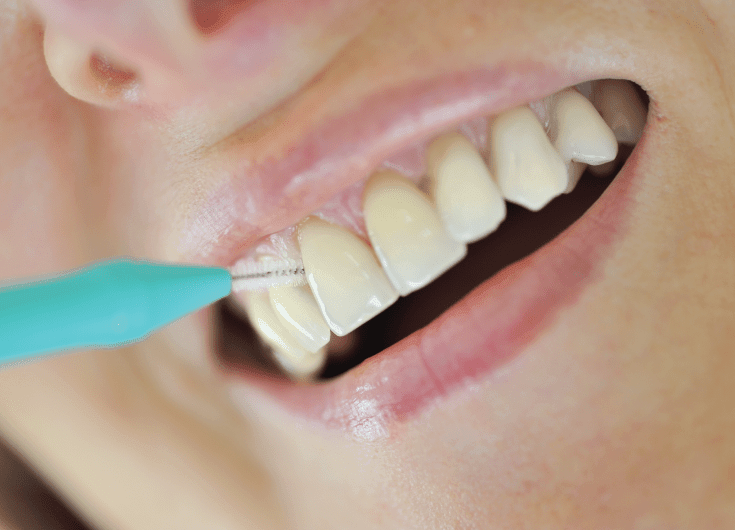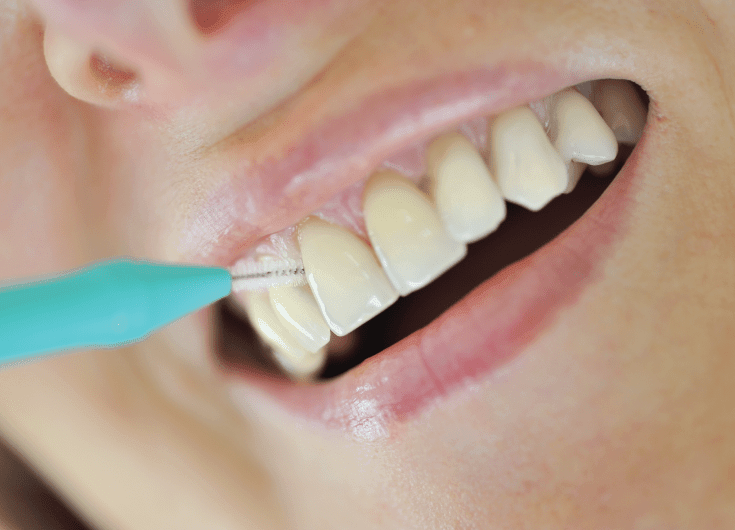Are you tired of feeling like you can never quite get your teeth clean enough? Do you struggle with the areas in between your teeth? Fret not, as we are here to help you achieve a cleaner and healthier smile with our tips on how to clean in between teeth.
Cleaning in between teeth is crucial in maintaining good oral hygiene, as it removes food particles and plaque that can lead to gum disease and tooth decay. In this article, we will explore different methods and tools you can use to clean those hard-to-reach areas and achieve a brighter, healthier smile. So let’s get started!
How to Clean in Between Teeth?
Flossing is the best way to clean in between teeth. Take a piece of floss and wrap both ends around your fingers. Gently slide the floss in between each tooth, making a C-shape around the tooth and moving it up and down. Don’t forget to clean the back teeth as well. Flossing once a day helps remove plaque and prevent cavities.

How to Clean in Between Teeth?
Keeping your teeth clean and healthy is an essential part of maintaining good oral hygiene. While brushing and flossing are crucial for removing plaque and food particles from the surfaces of your teeth, there are still some areas that are hard to reach. This is where cleaning in between your teeth comes in. In this article, we will discuss the best ways to clean in between your teeth to keep your smile healthy and bright.
Why is cleaning in between teeth important?
Cleaning in between your teeth is essential because it helps remove plaque and food particles that are left behind after brushing and flossing. If left unaddressed, this can lead to tooth decay, gum disease, and bad breath. Additionally, cleaning in between your teeth can help remove stains and improve the overall appearance of your smile.
The areas between your teeth are particularly vulnerable to the accumulation of plaque and food particles. This is because toothbrush bristles and floss cannot always reach these areas effectively. By cleaning in between your teeth, you can remove the buildup of bacteria and food that can cause cavities and gum disease.
There are several ways to clean in between your teeth, including flossing, interdental brushes, and water flossers.
How to clean in between teeth with floss?
Flossing is one of the most common ways to clean in between your teeth. Here’s how to do it properly:
1. Start by taking a piece of floss about 18 inches long and wrapping the ends around your fingers.
2. Hold the floss tightly between your thumbs and forefingers.
3. Gently insert the floss between your teeth using a back-and-forth motion.
4. Curve the floss around the base of each tooth, making sure to go below the gumline.
5. Use a clean section of floss for each tooth to avoid spreading bacteria.
Benefits of flossing
Flossing helps remove plaque and food particles from between your teeth, reducing the risk of tooth decay and gum disease. It also helps remove stains and improve the appearance of your smile.
Interdental brushes vs. flossing
Interdental brushes are small, cone-shaped brushes that are designed to clean in between your teeth. While they can be more comfortable to use than floss for some people, they may not be as effective at removing plaque and food particles as floss.
How to clean in between teeth with interdental brushes?
If you prefer to use interdental brushes to clean in between your teeth, here’s how to do it:
1. Choose an interdental brush that fits comfortably between your teeth.
2. Gently insert the brush between your teeth, using a back-and-forth motion.
3. Move the brush in and out several times to remove plaque and debris.
4. Rinse the brush with water after each use.
Benefits of using interdental brushes
Interdental brushes can be more comfortable to use than floss for some people. They are also an effective way to remove plaque and food particles from between your teeth.
Water flossers vs. flossing
Water flossers are devices that use a stream of water to clean in between your teeth. While they can be more comfortable to use than floss for some people, they may not be as effective at removing plaque and food particles as floss.
How to clean in between teeth with water flossers?
If you prefer to use a water flosser to clean in between your teeth, here’s how to do it:
1. Fill the water flosser with warm water.
2. Hold the tip of the water flosser to your teeth, starting with the back teeth on one side of your mouth.
3. Turn the flosser on and let the water flow over your teeth and gums.
4. Move the flosser along the gumline, using a circular motion to remove plaque and debris.
5. Repeat on the other side of your mouth.
Benefits of using water flossers
Water flossers can be more comfortable to use than floss for some people. They are also an effective way to remove plaque and food particles from between your teeth.
Conclusion
Cleaning in between your teeth is essential for maintaining good oral hygiene. Whether you prefer flossing, interdental brushes, or water flossers, the key is to find a method that works for you and to use it regularly. By keeping your teeth clean and healthy, you can enjoy a brighter, more beautiful smile for years to come.
Frequently Asked Questions
In this section, you will find answers to some of the most common questions about cleaning in between teeth.
Why is cleaning in between teeth important?
Cleaning in between teeth is crucial for maintaining good oral health. Brushing alone cannot remove all the food particles and bacteria that get stuck between teeth. Failing to clean in between teeth can lead to gum disease, tooth decay, and bad breath.
Using dental floss, interdental brushes, or water flossers can effectively remove the plaque, food debris, and bacteria that are hiding in between teeth.
How often should I clean in between my teeth?
You should clean in between your teeth at least once a day, preferably before bedtime. This will help remove any food particles and bacteria that have accumulated throughout the day. However, if you have braces or dental restorations, such as bridges or implants, you may need to clean in between your teeth more frequently.
It’s also important to note that while cleaning in between teeth is essential, it should not replace regular brushing and flossing. You should still brush your teeth twice a day and floss at least once a day.
What tools can I use to clean in between my teeth?
There are several tools you can use to clean in between your teeth, including dental floss, interdental brushes, and water flossers. Dental floss is a thin thread that you can use to remove food particles and plaque from between your teeth.
Interdental brushes are tiny brushes that can fit between teeth and effectively remove plaque and food debris. Water flossers use a stream of water to clean between teeth, making them a great option for people with braces or other orthodontic appliances.
How do I properly use dental floss?
To use dental floss, start by cutting a piece that’s about 18 inches long. Wrap the ends around your middle fingers and hold it taut with your thumbs and index fingers. Gently slide the floss between your teeth and curve it around the base of each tooth, making sure to go beneath the gumline.
Use a clean section of floss for each tooth, and don’t forget to floss the back of your last molars. Be gentle and don’t force the floss, as this can damage your gums.
Are there any alternatives to traditional dental floss?
Yes, there are several alternatives to traditional dental floss. Interdental brushes are small brushes that can fit between teeth and effectively remove plaque and food debris. Water flossers use a stream of water to clean between teeth, making them a great option for people with braces or other orthodontic appliances.
You can also try using dental picks or pre-threaded flossers if you prefer a more convenient option. However, it’s important to note that these alternatives may not be as effective as traditional dental floss for removing plaque and food particles.
How to Clean Between your Teeth
In conclusion, cleaning in between your teeth is an essential part of maintaining good oral hygiene. Neglecting to clean in between your teeth can lead to the buildup of harmful bacteria and plaque which can cause gum disease, bad breath, and even tooth decay. By incorporating daily flossing or using interdental brushes into your oral care routine, you can effectively remove plaque and food particles from those hard-to-reach areas.
Remember, cleaning in between your teeth is not a substitute for brushing your teeth. It is important to brush your teeth twice a day for at least two minutes with fluoride toothpaste. Additionally, regular dental check-ups and cleanings are crucial to maintaining a healthy mouth.
Incorporating the habit of cleaning in between your teeth may take some getting used to, but the benefits are well worth it. By taking care of your teeth and gums, you can not only improve your oral health but also your overall health and wellbeing. So don’t neglect those spaces in between your teeth, and make sure to include it in your daily oral care routine.

